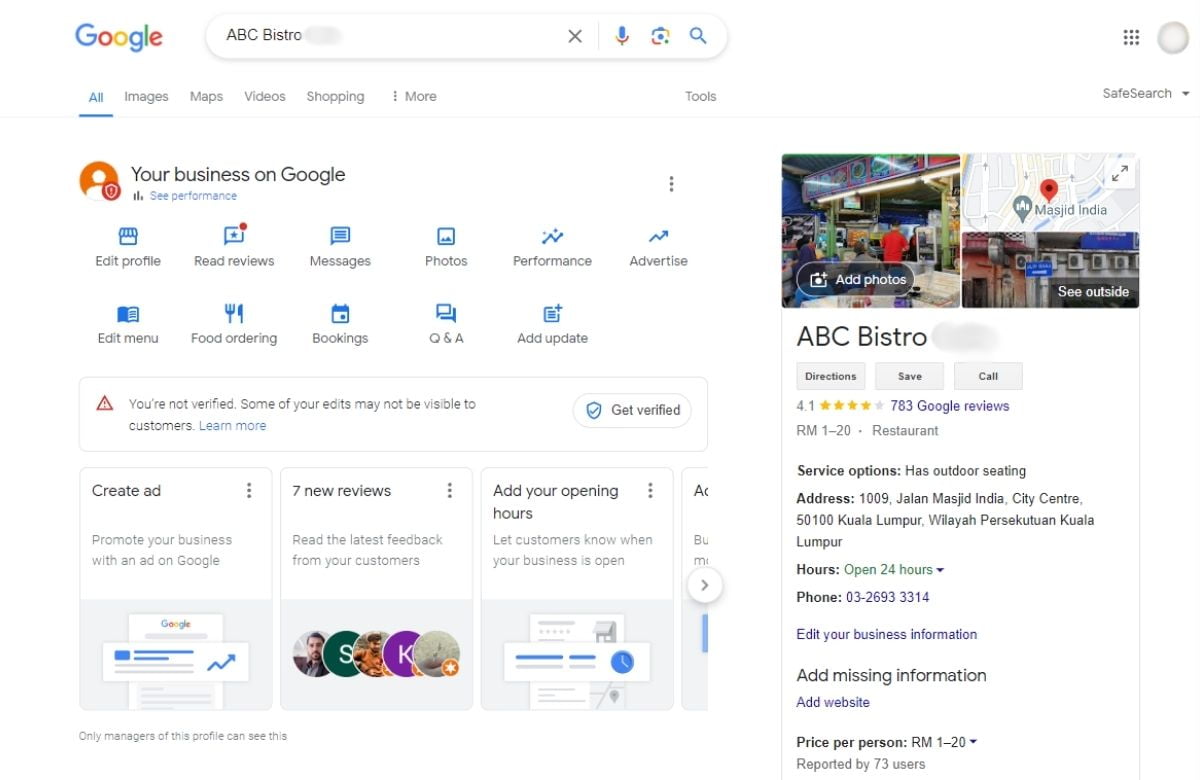Over the past few years, voice search has evolved in amazing ways. It is now available with Amazon Alexa, Google Assistant, and Apple’s Siri. These devices have become almost a default part of our everyday workflows, providing easy and hands-free ways to look for information or interact with smart home gadgets. As a result, people are embracing the use of voice searches to seek answers and recommendations for almost everything, which is a current trend in the digital context.
This new environment presents a unique opportunity and threat as well to businesses. As a result, voice search optimisation is not just an option for new websites anymore, they have to do it. Since voice queries can be over 20% longer than their text-based counterparts, businesses must revise their SEO planning methods to account for this development. Companies can optimise for voice search, improve their visibility, improve user experience and remain relevant in the market. These techniques also emphasise voice search optimisation campaigns, which endorses more engagement and traffic that translates to a high conversion rate.

Mobile Usage Statistics
Access to and Internet usage through mobile devices has risen recently. Now, it is necessary to use statistics – so by mid-2023, 95. 8% of the digital population has accessed the Internet using mobile devices. This shift is the case with the proportion of unique visitors accessing websites via mobile devices has increased to 51% from a previous 49%. 1% in 2017 to 59. 1% in 2022. On the other hand, desktop Internet usage has come down from 41. 52% to 37. 08% over a year. These statistics show the increasing trends of mobile devices in society.
Impact on User Experience
As we saw, mobile SEO is a significant factor in improving user experience. A website that is friendly to mobile devices entails that users can effectively operate and engage the content with their devices. This involves designing for large and small screens, speeding up the webpage, and creating an easy-to-use website. Mobile-friendly browsing leads to low bounce rates since visitors can spend more time on other sites that are friendly and easy to navigate. The mobile responsive designs are crucial for users to stay engaged with their site more and interact with the content.
Top 7 Strategies to Optimise Your Website for Voice Search
The ability to conduct searches by voice is the next step in how your site interacts with search engines. Therefore, ensure you are ahead of the trend, as it will offer you a competitive edge. Here are the top 7 strategies that will help you to improve your SEO for voice search:
1. Prioritise Long-Tail Keywords and Conversational Phrases
Explain Long-Tail Keywords
Long-tail keywords are longer and more detailed keyword phrases that a user will generally type in when they are closer to making a purchase or when they know what it is that they are looking for. The best part is these keywords are not as competitive and can send high quality focused traffic to your site.
How Voice Searches Are More Conversational
Voice searches often mimic natural speech patterns and are frequently in the form of questions. For example, instead of typing “Chinese restaurant,” a user might ask, “What are the best Chinese restaurants near me?”

How It Works for Voice Search
By optimising for these conversational and question-based keywords, you can capture more voice search traffic. This involves understanding the natural language your audience uses and incorporating those phrases into your content.
Examples:
Phrases like “best Chinese restaurants near me” or “how to fix a leaky faucet” are commonly used in voice searches. These long-tail keywords are more likely to match the way people speak when using voice search.
2. Create FAQ-Style Content
Why FAQ Content Matters
Many voice search queries are questions, making FAQ sections highly relevant. Users often ask specific questions, and having content that directly answers these questions can improve your chances of appearing in voice search results.
How to Implement
Incorporate FAQ sections on your product or service pages to directly address common questions. This not only helps with voice search optimisation but also enhances the user experience by providing quick answers.
Examples
Questions such as “What is the best skincare routine for dry skin?” or “How do I reset my password?” can be optimised to appear in voice search results. Structuring your content to answer these questions clearly and concisely can improve your visibility.
3. Optimise for Local SEO
The Connection Between Local Searches and Voice Search
A significant portion of voice searches are for local information. Users often search for businesses, services, or events near their location. Implementing local SEO strategies ensures your business appears in these searches.
Strategies

Make sure that your Google Business Profile is completed with current information. Add relevant location keywords to optimise your content for ‘near me’ searches. This helps you show up in local searches conducted by users looking for such services or products in the nearby vicinity.
Tips for Local Voice Search
Use location-specific schema markup to boost your visibility in local searches. This markup helps search engines understand your business’s location and relevance to local queries. Additionally, encourage customer reviews and ensure your contact information is consistent across all online platforms.
4. Use Structured Data and Schema Markup
How Schema Helps
Structured data helps search engines better understand your content, increasing the chances of appearing in voice search results. Schema markup provides additional context to your content, making it easier for search engines to interpret and display it accurately.
Implementing Schema
Add schema types like FAQs, product information, or business details to your site. This can help your content stand out in search results and improve your chances of being featured in voice search answers.
Example
Structured data can make searches like “best Chinese restaurant near me” much more likely in voice search results. With the right schema markup, you can tell about your business more accurately and make search engines understand the location, working hours or customer reviews.
5. Focus on Page Speed and Mobile Optimisation
Why Page Speed Matters for Voice Search

Voice Search users typically seek immediate answers, meaning page speed will be a major ranking factor. If your pages take too long to load, this can also hurt the user experience and potentially stop you from appearing in voice searches.
Mobile-First Strategy
Since many voice searches are conducted on mobile devices, optimising for mobile performance is essential. Ensure your website is responsive and provides a seamless experience across all devices.
Tips to Improve
Use tools like Google’s PageSpeed Insights to identify areas for improvement. Reduce image sizes, leverage browser caching, and minimise JavaScript to enhance page speed. Additionally, ensure your site is mobile-friendly by using responsive design and optimising for touch navigation.
6. Aim for Featured Snippets and Zero-Position Results
Why Featured Snippets Are Important for Voice Search
Featured Snippets are presented at the top of search results; many voice searches return from this information. Sitting at the top of a snippet will expose your content and label to readers — if you get selected as the highlight, however, it can lead to lots upon-lots more eyes to view what you have on offer.
How to Optimise for Snippets
Structure your content to provide clear, concise answers to common queries. Use bullet points, numbered lists, and headings to make your content easy to read and understand.
Example
Format your content to answer questions like “What is voice search SEO?” to increase the chances of appearing as a snippet. Providing a direct, well-structured answer can improve your chances of being featured.
7. Optimise for Natural Language and Conversational Tone
Why Natural Language is Key
Voice search queries are more in a conversation mode, so try to adjust the tone of your content to such a mode. Putting together only normal conversations makes the entire text more interesting and simpler to comprehend.
How to Implement

Avoid overly formal or technical language and write in a way that simulates how people speak. Pay attention to how your target audience speaks and include those patterns in your writing.
Example
For a phrase like “How do I optimise my website for voice search?”, the conversational style is more likely to allow you to appear in results when people ask about their device. By using a friendlier, less scammy tone, you’ll be able to tap into the audience’s needs and better connect with them, so there may be another website choice next time when voiced searches happen!
Conclusion
Lastly, voice search is an important aspect of the digital puzzle today. If you pay particular attention to such techniques as using long-tail keywords, writing in a conversational tone, developing FAQs, localising SEO practices, using structured data and schema in markup, enhancing page speed (for mobile devices), targeting featured snippets, and embracing a more natural form of writing your website will be visible in the search results making it more appealing and interesting than in the previous occasions. These tactics will enable you to enhance your voice search traffic, improve user satisfaction, and stay put in the stiff competition in this dynamic environment. Start practising these strategies now, so your business does not lag in a long–actuated forthcoming period.






